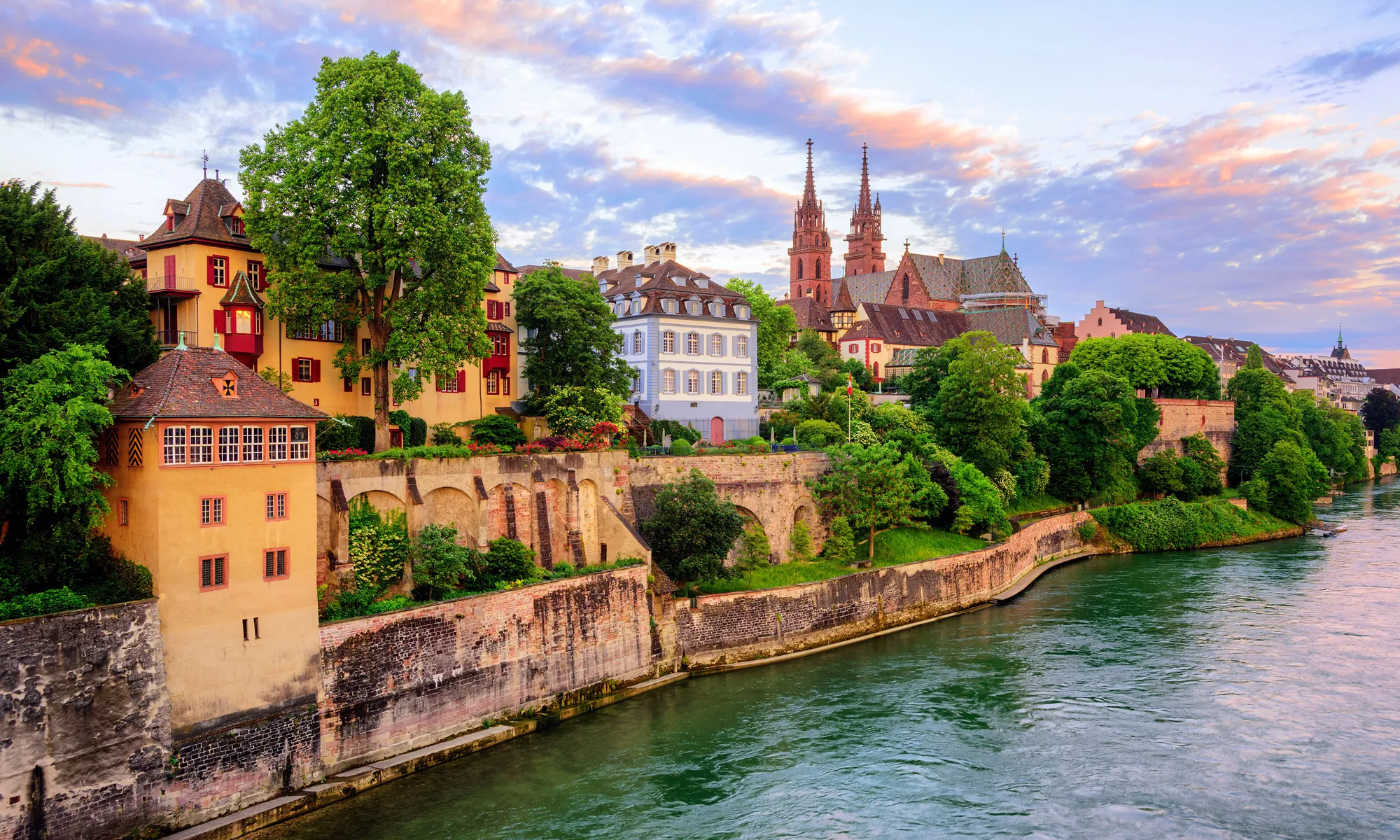Europe is home to some of the world’s most compelling tourist destinations, from the streets of London and Paris to the stunning Amalfi Coast and towering Swiss Alps. Even if you don’t feel like battling throngs of tourists and locals, there are still plenty of ways to explore the continent in a style all your own. Avoid crowds at some popular destinations or go off the beaten path to discover underrated European destinations for a vacation unique to you.
Exclusive Offers.
Sign up to receive personalized promotions and packages for your next vacation from trusted travel experts.
Undiscovered European Cities and Villages
These twelve locations are among the best hidden gems in Europe!
Basel, Switzerland
This small city on the border of Switzerland, Germany, and France is home to just over 150,000 residents, but it offers tourists dozens of things to do. A large handful of art and design museums, as well as a few history museums, house impressive collections of culture. One of the most fascinating hidden gems in Europe, Basel sits on the Rhine, claims 300 days a year of sunshine, and is home to the Rehberger-Weg art trail, so it’s a great stop for outdoor enthusiasts too.
Berchtesgaden National Park, Germany
Many travelers think of Europe’s historic cities when planning a visit. The continent is also home to vast natural landscapes, including the Berchtesgaden National Park in Germany. Snowcapped mountains, alpine lakes, and 250 kilometers of hiking trails greet visitors willing to journey to the southeast of Germany, about two hours from Munich.
Bohinj, Slovenia
Located in the heart of the Julian Alps, the most southeastern part of the Alps, Bohinj is situated in the center of Triglav National Park. Perhaps the valley’s most breathtaking natural site is Lake Bohinj, the largest lake in Slovenia, glistening with crystal-clear water that reflects the massive mountain range. Aside from Bohinj’s natural scenery and adventure, this European hidden gem boasts a rich cultural heritage worth exploring.
Faroe Islands, Denmark
There is a little bit of everything, from dramatic waterfalls to tiny fishing towns, in the Faroe Islands, which are a self-governing territory within Denmark. This collection of islands enjoys summertime temperatures around 55°F and almost 20 hours of sunlight on the longest day of the year, perfect for the hours of hiking you’ll want to do here.
Olomouc, Czech Republic
One of the most underrated places to visit in Europe, Olomouc is almost dead center between Prague, Czech Republic, and Krakow, Poland. On your next trip to Central Europe, make a point of stopping in this cultural hotspot. The Holy Trinity Column, boutique hotels, detailed fountains, botanical gardens, and a huge number of gorgeous churches greet visitors spending a few days here.
Ortigia, Italy
The Island of Ortigia, part of the city of Syracuse, is located in the Mediterranean Sea just off the shores of Sicily. Take in the ancient architecture (including the Piazza del Duomo and the Duomo itself), open air cafes, blue skies and bluer water, and picturesque narrow stone streets.
Ragusa, Sicily
One of the most beautiful undiscovered European cities, Ragusa sits on a hilltop nestled in the Hyblaean Mountains. Picturesque scenery, baroque architecture, and ornate artwork characterize this post-earthquake Sicilian town. Explore the city’s breathtaking cathedrals, winding cobblestone streets, and exquisite food and wine.
Skopje, Macedonia
Macedonia is just north of Greece, but it only hosts about a million tourists each year, as compared to Greece’s 28 million visitors! As Macedonia’s capital city, Skopje offers travelers architecture dating back to the Roman rule, lake and mountainside day trips, independent shops, and the Museum of the City of Skopje.
Sistelo, Portugal
If you’re looking for a truly remote getaway, this quaint village of 300 inhabitants offers the perfect unexpected escape. Just a 90-minute car ride from Penada Geres National Park, Sistelo offers an abundance of natural treasures, which are viewable from the thousands of manmade terraces covering the landscape. The old little village of Sistelo, also known as “The Little Portuguese Tibet,” is also home to a wealth of local history and culture, visible in its incredible architecture.
Vis, Croatia
Vis the easternmost inhabited Dalmatian island in the Adriatic Sea. The island and its eponymous city are home to spectacular Greek ruins and an archeological museum that once held the most Hellenistic artifacts in all of Europe. Its exhibits remain among the most impressive in the region and provide the perfect backdrop for those visiting Vis for its award-winning beaches. Private, secluded, and begging to be explored, Vis’s public beaches offer caves, coves, and stunning cliffs in addition to soft sand and a mild climate. Travelers can combine the island’s history and natural beauty with a full day of tours led by an expert local guide!
Karuč, Montenegro
Once upon a time, virtually any of Montenegro’s illustrious ancient and medieval cities could have made this list. Now, Montenegro’s blend of natural sites, historic attractions, and stunning beachside resorts attracts huge numbers of tourists each year. But finding private, far-flung excursions is still possible (at least for now).
Located just 20 kilometers from the equally stunning but more well-known Gothic town of Risan, the village of Karuč offers a glimpse into a bygone Middle Age era and is set among the one-of-a-kind topography of Lake Skadar (also known as Lake Shkodra). Visit Skadar Lake National Park and the luxurious, secluded Aman Sveti Stefan resort while enjoying outdoor activities like rock climbing, fishing, and boating.
Heptonstall, Great Britain
To immerse yourself in the storied legacy of West Yorkshire without the crowds and chaos of nearby Manchester, try Heptonstall. The town is famous for its past and contemporary impact on art. It is the resting place of the late American poet Sylvia Plath and the contemporary site of the annual Pennine Music Festival.
Other notable attractions in Heptonstall include the famed octagonal Methodist church standing as a monument to early Victorian-era religious architecture and John Wesley’s revolutionary Anglican Church. Founded as a weaving town, Heptonstall became a notorious 18th-century crime scene when authorities discovered that the gold was being removed from the region’s currency and then put back into circulation. The incident was notable enough to make the building where the crime occurred a historic site.


